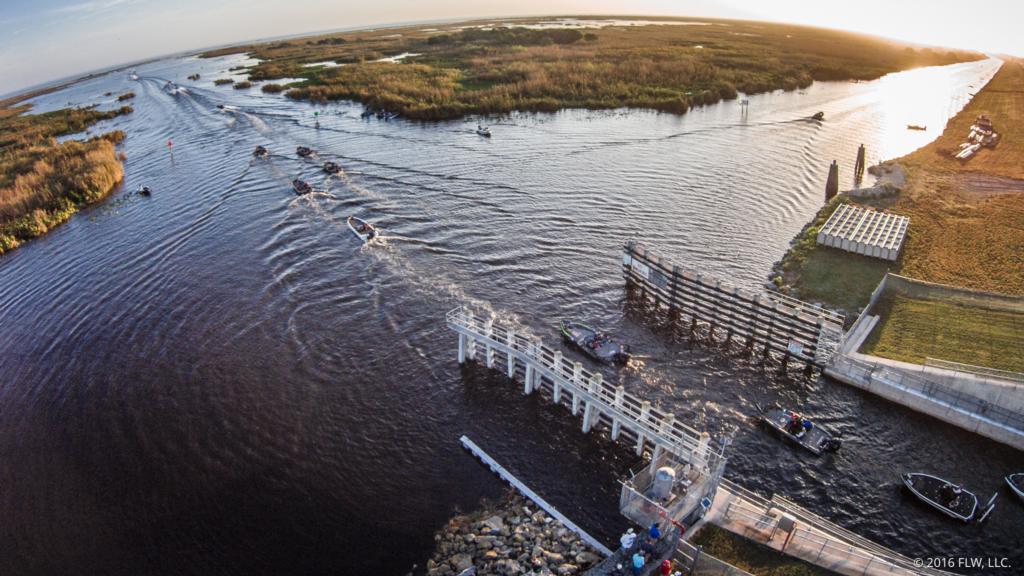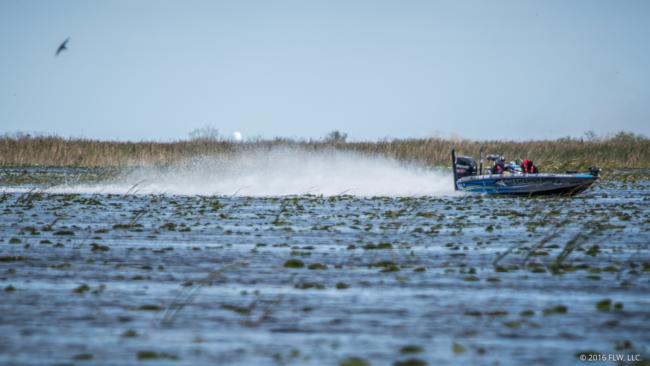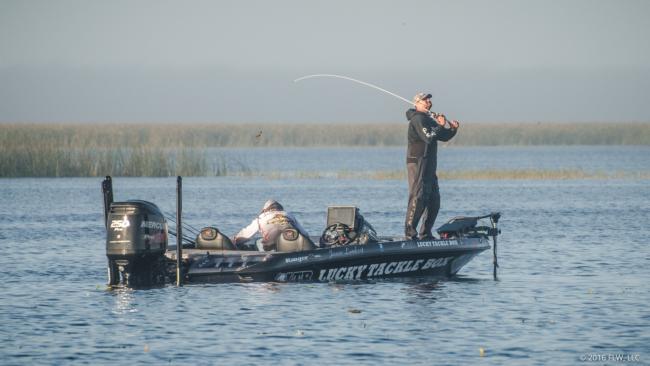Good Ol’ Okeechobee
The Big O is setting up better than last year for the Costa FLW Series kickoff

As it so often does, the Costa FLW Series kicks off another year of tournament fishing on famed Lake Okeechobee. This year, the Southeastern Division takes off out of Clewiston, Fla., Jan. 26-28, with a full field of 250 pros and co-anglers eager to test their mettle on the big south Florida bowl.
The state of the lake
Last winter on Okeechobee was one to forget. With high water and a succession of cold fronts, the fishing in the high-level FLW events on the big grassy bowl was pretty bad. In the Costa FLW Series opener Jason Lambert earned the win and average less than 15 pounds per day. The fishing and the weather were better in the FLW Tour opener where Bradley Hallman smoked them the first two days and then averaged less than 10 pounds a day on the weekend to close out the win. On the final day of the Tour event, only three pros landed more than 10 pounds, and nobody even cracked the 11-pound barrier.
This year, the outlook is a lot more positive. Just more than a week ago Robert Beatty took top honors with 27-10 in the first T-H Marine FLW Bass Fishing League (BFL) event of the year, and 11 boaters weighed in more than 19 pounds. Good BFL weights aside, a combination of factors has change the dynamic of the lake. Because the water stayed high for much of 2016, many of the “hard lines” of cattails that used to protect the hayfields of the south end have drifted and blown apart.
“You will not recognize where Bradley Hallman and Val [Osinski] won,” says FLW Tour pro Joe Holland. “The trails for boats are completely gone, and there’s no hard wall [of cattails] out in front of the hayfields. There are fish to be caught, but it leaves it very susceptible to the wind. Anything other than a straight south wind is gonna dirty it up a lot more and further back into those hayfields. Most of the grass way back in the hayfields never saw dirty water. Now that it’s wide open that dirt is pushing farther back.”
Luckily, the water is coming back down to normal levels. It’s currently at about 14 feet above sea level, which is only about a foot away from truly ideal conditions. Outside of the south end, the rest of the lake is still in fine condition, with lots of grass growing in and around most of the historically good areas.
“The lake itself is super healthy. There are a lot of 2- to 3-pounders now because we’ve had some good spawns, and they’re starting to show up at the scales now,” says Juan Ruiz, who calls Okeechobee home. “There’s been more shad and more schooling activity than I remember in recent years. A couple weeks ago I set up on a school, and I bet we caught a hundred fish in two hours. They're all 1- to 3-pounders, but there’s an occasional 4. We’re hoping a couple years from now they grow up to be 5s.”
With more open water in the south and healthy grass up north, Ruiz says the state of the lake is similar to how it fished in the early 2000s when he was first learning it. Though flipping is still a factor, he says that winding a bait is as good as ever.
Though both pros think the fishing can be good almost anywhere in the lake now, Holland says to look for most of the action to happen on the north end.
“If I had to give you a percentage, I’d say 75 percent of the checks are going to be cashed up north,” he adds. “But where it’s going to be won, that’s up in the air. Let’s say 100 guys run south, it very well could be won down south, but I think there will be a lot of guys that catch 30 or 40 fish down south for 8 or 9 pounds. It’s a lot harder to pick off big fish down south, but it can be done.”
Patterns to watch
Come tournament time, most of the anglers will likely focus on the handful of Okeechobee standby patterns that have produced year in and year out in winter tournaments.
“I would say the top five baits this year are going to be a Gambler Big EZ, a Burner Worm, a ChatterBait, a swim jig and a flipping bait,” says Holland. “In years past I’d flip that order around.”
In addition to the usual mix of flipping reeds, mats and hydrilla with punching baits and big jigs or winding plastics and ChatterBaits and whatnot through and over the grass, a few other less-heralded Okeechobee tactics might come into play. Because of the higher-than-normal water, Holland says a spinnerbait has been working well. For Ruiz, a lipless crankbait has been doing work on the outside of the grass, and a prop bait has been better than usual at drawing up spawning bass.
It’s rare that a sight-fishing derby breaks out on Okeechobee, and with high water that isn’t likely to happen this year. But that doesn’t mean that spawning bass won’t be caught. If the weather cooperates it’s easy to imagine a wave slipping up onto the flats to spawn. If things stay a little cooler, there should still be plenty of opportunity for truly prespawn bass as well as postspawn fish.
However the weather plays out, getting in the right area is always key.
“The area that you’re in is sometimes a lot more important than what bait you’re throwing,” says Ruiz. “The way these fish group up on the flats, if you get around the right area you can catch them a lot of different ways.”
North or south, flipping or moving, day one will be plenty exciting regardless. There’s no better place to start the tournament season than south Florida.
Related Info
How John Cox slings a Speed Worm
Osinski’s Texas-Rigged Swimbait

